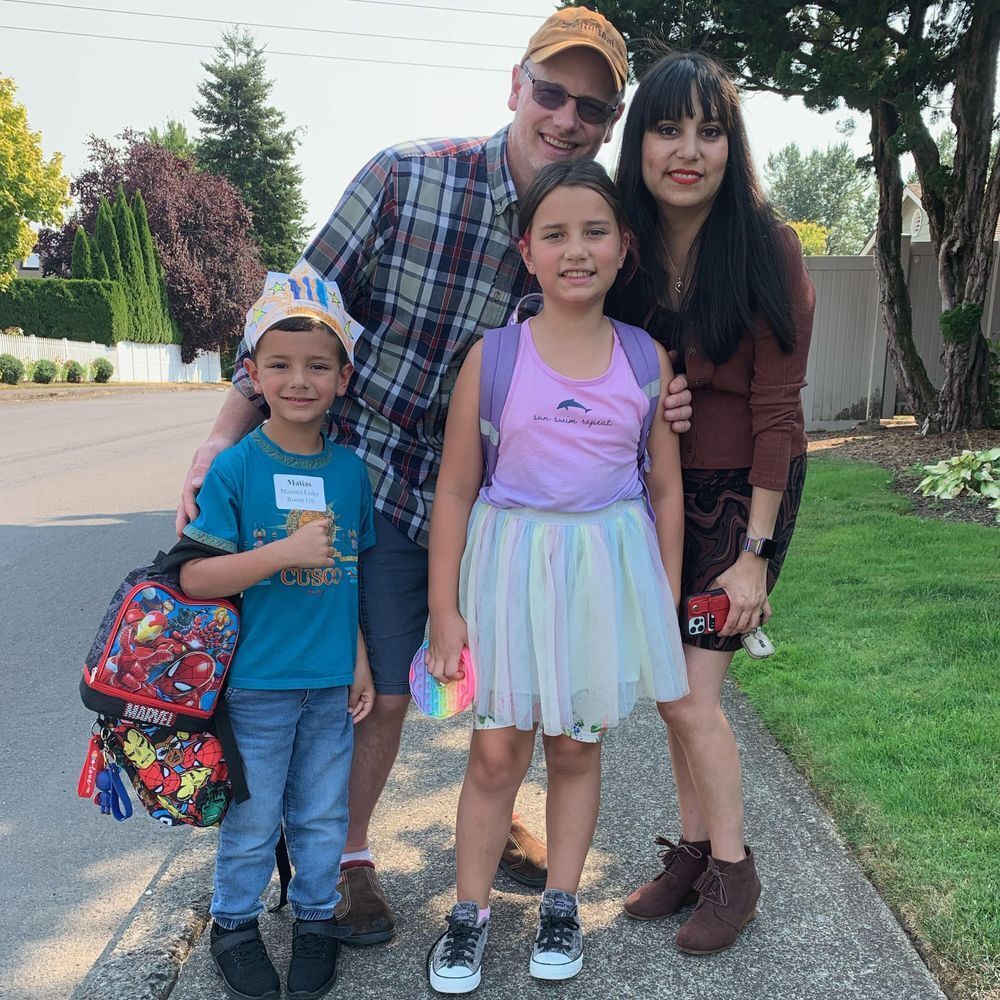Jess Wenick, Malheur National Wildlife Refuge Manager

"I was born in the Harney County Hospital, just down the street from the old Valley View Hospital where my father was born. My family here has consisted of construction contractors, ranchers, and educators/office staff of the Burns and Crane School Districts and Harney ESD. Before moving to Vancouver, Washington in 2016, I lived in Harney County for 41 years."
Jess is now the Malheur National Wildlife Refuge's (Malheur NWR) Manager and his history with the U.S. Fish and Wildlife Service (USFWS) goes back many years beginning when he was 15. "My first experience working for the federal government was through the USFWS Youth Conservation Corps at Malheur NWR at the age of 15. Although we rebuilt a lot of fence around Malheur and Harney Lakes following the 1980s flood, we also had the opportunity to work with Rick Vetter and the Biology Program conducting duck nest searches, banding sandhill crane colts, and more. Rick inspired me to pursue natural resource management. After two summers at Malheur NWR, I went on to the Forest Service working for their wildlife, range, and fire programs in the summers through the rest of high school and as a college undergraduate. In 1997 I accepted a summer position with the Agriculture Research Service collecting data at the Northern Great Basin Experimental Range for Jeff Rose and Tony Svejcar and I also had the opportunity to assist with additional studies conducted by John Bates, Rick Miller, and Dave Ganskopp. After graduating with a degree in Rangeland Resources from Oregon State University’s (OSU) satellite program at Eastern Oregon University, I went on to pursue my graduate degree at OSU with Tony Svejcar as my major professor. Under Tony’s guidance, I studied the effect of grazing duration on forage quality and production of meadow foxtail. My research assistant was an old Thoroughbred aptly named Maggot.
After receiving my Masters in Rangeland Resources, I went to work for the Burns Paiute Tribe in January 2001. I ultimately served as the manager of their wildlife program, which included the Logan Valley and Malheur River wildlife mitigation projects. I received an upgrade from Maggot to a Quarter Horse mare I named Large Marge. A cutting horse she was not, taking a quarter acre just to turn around, but she had attitude and tackled the slopes of Jonesboro with determination."
From 2003 to 2016 Jess returned to the Malheur NWR as the Range Management Specialist/Ecologist, where he oversaw the haying and grazing program, invasive species control, and water management as well as eventually the wildlife program. During this time Jess also assisted Chad Karges and Rick Roy as they built the foundation for the Malheur NWR Comprehensive Conservation Plan collaborative process. He also served as an author of this plan completed in 2013 and created the collaborative Ecology and Wildlife Working Groups.
"Although I went on to work within our agency’s Regional Office, first as an Inventory and Monitoring zone biologist and then as the Invasive Species Coordinator and Regional Ecologist, my heart never left Malheur NWR and the Harney Basin. I continued to provide support for the refuge staff when asked during my seven year absence."
With Jess back working for the Malheur NWR he's got some important projects underway. The Malheur NWR Comprehensive Conservation Plan is a 15 year plan that is due to reenter the planning phase to address emerging issues such as "the active invasion of reed canarygrass and smooth brome in our meadows and evolving opportunities on Malheur Lake". "I also work with adjacent landowners who are or may be impacted by our current management, regional programs within the USFWS such as Ecological Services, Fisheries, and Water Resources on pressing matters, and assist the Refuge’s Biology Program in prioritizing actions at a time when needs far outweigh available resources."
"An essential part of my position is to build and maintain effective working relationships with State and local governments, elected officials, non-governmental organizations, and the community of Harney County. The ability to have open and honest communication with everyone who has a vested interest in the Refuge is key to our success in our role in the Refuge System as well as being an integral part of the local community."
Jess plays an important role as mentioned previously with the Malheur NWR Comprehensive Conservation Plan as well as the Harney Basin Wetlands Collaborative: "I feel that working closely with diverse partners is really important for me and other Refuge staff to stay updated on what others are doing across the Harney Basin and align resources to meet common goals. These collaborative efforts also provide a great opportunity to share the Refuge’s challenges and opportunities that provide important context for the decisions we are required to make."
"The most challenging part of my work is finding ways to incorporate all the essential elements of natural resource management on federal land. I believe there are ways to balance and complement conservation, sociological, and economic interests while addressing complex issues involving water rights, Endangered Species Act, and more. It does, however, take a village to tackle complex issues and find effective solutions that maximize win-win results."
Outside of work Jess has his family and a variety of interests that consume his time: "My family and I enjoy getting together with relatives, camping, fishing, swimming, gardening, and reading books together. I also enjoy playing bass guitar, piano, and cello, painting landscapes, and studying world history and theology."

